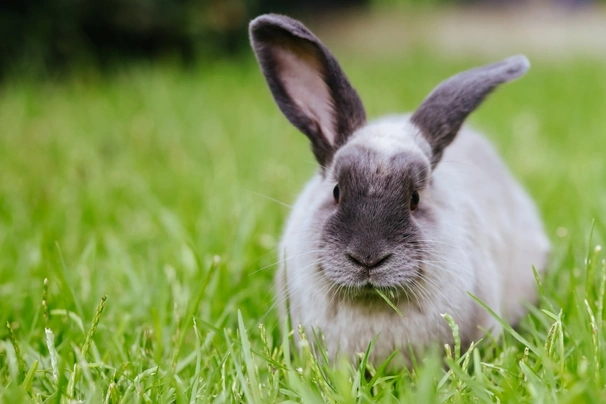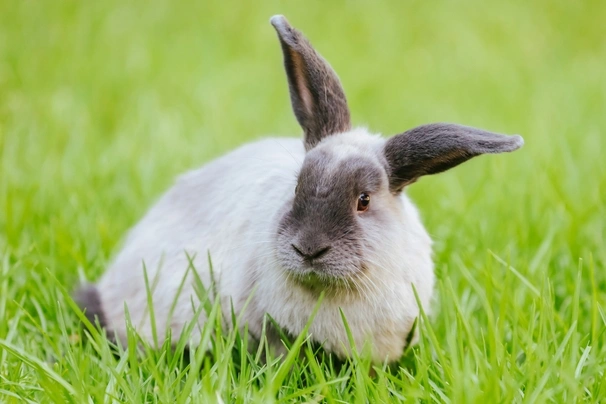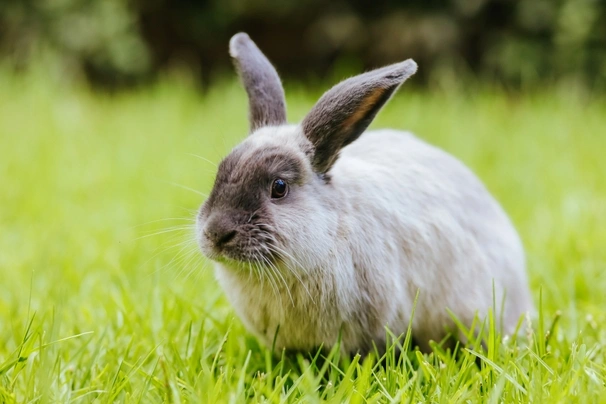Sable
Introduction of the Sable
The Sable is the result of crossing many types of Chinchilla Rabbits. Recessive genes in the Chinchilla lines produced an entirely new colour, with a body shape that remained identical to the Chinchilla itself.
The feet, tail, ears, head and back of the Sable are dark, and that darker colouring fades to a lighter tan colour over the rest of the body. The Sable is a medium to large rabbit that has a docile, friendly character and makes a great pet. It gets on very well with other rabbits so it may be worth considering getting two animals if you’re thinking about getting one.
History of the Sable
The American Sable as it is sometimes known, first appeared in the very early years of the 20th Century after being developed by Otto Brock, who lived in California. After crossbreeding Chinchilla Rabbits he developed the Sable when rabbits with different colouring began to appear in his litters.
The American Sable Rabbit Association was founded in 1929, and the breed was finally accepted by the American Rabbit Breeders’ Association two years later. By the 1970s the breed had begun to lose its appeal, and by 1981 the breed was only represented by one animal at the American Rabbit Breeders’ Association. Al Roerdanz, an Ohio-based breeder took seven Sable rabbits and attempted to revive the breed and at the 1982 ARBA Show, there were enough Sable Rabbits in attendance to guarantee the future of the breed.
Appearance of the Sable
- Main colourways: sepia brown with darker sepia brown over the back, feet, tail, ears and face
- Average weight: 3.2 – 4.5kg
The Sable is a medium to large rabbit with a well-rounded ‘cobby’ body that has good muscle cover. It has graduated colouring with a sepia brown over the flanks that darkens on the face, ears, feet, back and tail. Its dark eyes also have a deep ruby red colouring in the right light.
The head is rounded, with ears that are held upright and the topline creates a long curve, from the bottom of the neck to the base of the tail. The hair is soft and fine, but quite dense and blows over quite a long period, so potential owners must be prepared to do a lot of grooming over the moulting period – certainly more than with other breeds. A daily once-over with a slicker brush should take care of any excess hair and keep the animal comfortable.
The Sable weighs in at around seven to 10 pounds, with males being a little smaller than the females.
Temperament of the Sable
Most Sable rabbits are placid and friendly (although it must me noted there can be aggressive animals in any breed) and make great pets. They seem to enjoy the company of other pets and will relish having a rabbit friend to lark about with. They also thoroughly enjoy the company of humans and will enjoy playtime immensely. Offer him some noisy cat toys to play with and he’ll be very happy.
Many rabbits are at their most active in the early morning and at twilight and the Sable is no different. They will spend the majority of the day asleep, but they are docile and easy to handle. If they are stressed or frightened they will make a distinctive grunting noise and stamp their back feet in an attempt to appear menacing.
Health of the Sable
Like most rabbit breeds, the Sable can suffer with a number of health conditions that any responsible owner should look out for and prevent if possible.
No rabbit should be housed in quarters with a mesh floors unless they are provided with a resting board. The mesh can wear away the protective fur on the ends of the feet –the hocks – which will in turn expose the delicate skin underneath. This can become raw and broken and causes great discomfort and even infection.
The teeth of any rabbit should be monitored closely for signs of overgrowth. Rabbit teeth grow continually and can cause problems if they’re allowed to get too long. Gnaw toys, a diet high in fibrous material and regular checks will help keep dental issues at bay.
Rabbits are also susceptible to colds and respiratory problems so he must be protected from extreme fluctuations in temperature, as well as dust and fumes. He should be vaccinated against myxomatosis and Viral Haemorrhagic Disease, and he should also be treated for fleas, ticks and worms. He must be monitored for symptoms of flystrike – particularly in the warmer months. He shouldn’t be allowed to become overweight and unable to groom himself as this will make him susceptible to flystrike.
Caring for the Sable
The Sable can live happily in a hutch providing it’s large enough. And he has a friend! A good rule is one square foot per pound of rabbit, so a nine pound rabbit will be comfortable in a hutch that’s 3ft x 3ft – double it if you have two bunnies. It should also be high enough for him to stand up in. The hutch should be placed in a sheltered area and it must be completely weatherproof. It should be lined with shavings and straw and should also have a nesting area. The hutch must be cleaned thoroughly once a week and droppings must be removed daily.
If he’s going to live indoors with the family he must have a cage or crate to relax in and he should also be litter trained. Cables and wires should also be kept out of the way. Whether he’s going to live indoors or out he should have regular access to the outdoors – either in a secure run or fenced off area of garden.
His diet should consist of high quality pellets, good hay and lots of fibrous green vegetables such as kale, cabbage, dandelion leaves and carrot tops. He should also have access to clean drinking water at all times.


